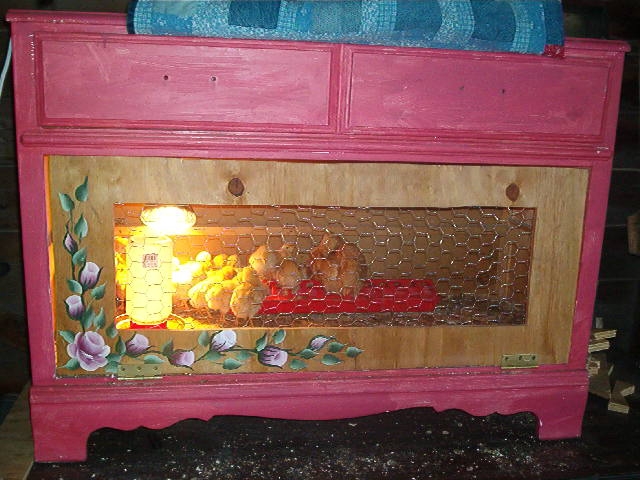Americana: These birds have a poofy beard and poofy cheeks. They are medium sized with a pea comb.
this is a picture of an americana rooster:
Ancona: These chickens have a color pattern of black with white spots. These birds are great layers and do good in the winter.
Andalusian:This breed of chicken is very rare though are great layers. They lay large white eggs. This breed is medium in size and has a normal single comb.
Antwarp Belgian Bantam: They have a rose comb and are common chickens. They are not great in cold weather and are very sweet!
Appenzeller Spitzhauben: This chicken is the national breed of Switzerland though they are still a rare breed. They have a special v shaped comb
Araucana: These birds lay medium sized eggs and are great layers. They have a pea comb and are very rare because they are hard to breed.
Aseel: These are an ancient breed from India. They are very rare.
Australorp: Australorps are very sweet and are very common birds. They are excellent egg layers too.
this a picture of 2 Australorp chicks:
Here is a pic of a grown Australorp:
Barnevelder: These chickens are medium in size and a common breed. They are good layers and have large sized eggs.
Belgian Bearded d'Uccle Bantam: These are common birds. They have feathers on their feet and have a sweet personality.
Booted Bantam: These chickens are rare and look just like the Belgian Bearded d'uccle Bantam but the Booted Bantams have no beard.
Brahama: These birds have a pea comb and beautiful feathers on their feet. Their personality is sweet and usually very quiet.
Campine: These birds are good layers and lay medium eggs. They are intelligent and do great in cold winters.
Catalana: These birds are common in Spain and South America but not in North America. They are amazing layers and very active birds.
Chantecler: These birds are very common and known for being the first ever Canadian breed.
Cochin: Cochins are a Chinese breede they are very friendly and make fabulous moms.
Cornish: These are common meat birds and poor layers.
Crevecoeur: This breed is very rare and today is mostly used for showing.
Cubalaya: These are rare chickens mostly kept in Cuba. They are known for their beautiful tail feathers.
Delaware: These are rare chickens and very good layers.
Dominique: This breed is a lot like a Barred Rock but Dominques have a wonderful pea comb.
Dorking: The Dorking is a rare breed and are large in size.
Easter Eggers: These chickens have a pea comb and are great layers.
Faverolles: These are rare birds with 5 toes not 4 but 5 toes!
Fayoumi:The Fayoumi is an Egyptian breed they are very alert and tend to be untame.
Hamburg: These are active birds that love to live in a free range home.
Holland: This breed is a large bird weighing 6 or 7 pounds.
Houdan: The Houdan is a rare breed that comes from France. They have adorable feathers coming off their little heads.
Japanese Bantam: The Japanese Bantam is only a Bantam they do not come in a large size. This breed is white with a pretty black tail.
Java: This breed is very rare. They are very pretty and are very sweet.
Jersy Giant: This breed is the largest breed of chicken and lay extra large brown eggs.
La Fleche: This bird is a rare breed and makes a good layer.
Lakenvelder: These birds come in bantam and large. they are also rare.
Langshan: These are common birds and tend to be calm.
Legbar: These chickens are extremely rare in the United States and make good layers.
Leghorn: This is a common breed and make excellent layers and are not great moms.

Malay: This breed is rare and has a bad reputation for being aggressive.
Marans: These are rare chickens that lay large beautiful dark brown eggs.
Mincora: This breed makes a good layer and lays large sized eggs.
Modern Game: These chickens are very common and are poor layers. They are mostly for show.
Naked Neck: This is a common breed with no feathers on their neck and come in about 4 different colors.
New Hampshire Red: This breed looks like a Rhode Island Red though they are 2 different breeds.
Orpington: This breed is very friendly so they make great pets. They are good layers and are very common. The most common Orpington is the Buff Orpington. here is a picture of a baby Buff Orpington:
here is a grown Buff Orpington:
Penedesenca: This is a Spanish breed. They are very rare and not very tame chickens.
Phoenix: These birds make wonderful looking roosters with amazing tails.They are Japanese chickens. They are Bantams and poor layers.
Plymouth Rock: These birds are also know as Barred Rock. They lay very well. They are commonly grey and a lighter grey.
Polish: These are pretty birds. They have crazy feathers on their head. They come in many colors and are okay layers.
Rhode Island Red: This breed is extremely common and make perfect egg layers. They lay extra large eggs and are a pretty dark red color. here is a picture of a young (not a chick) Rhode Island Red:
Here is a grown Rhode Island Red:



















 (Not my picture)
(Not my picture)